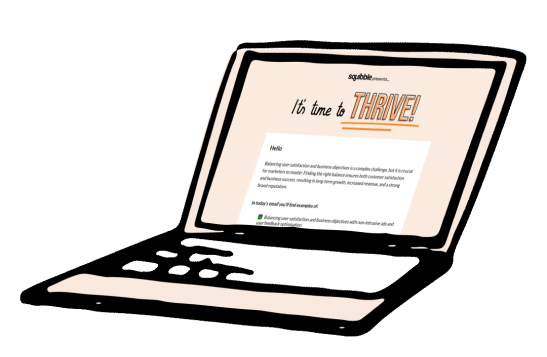Website visitors are seriously tricky customers – filled with mistrust and arriving with a protective defence that’s been built from years of digital marketing messages being thrust at them from every angle.
Add to this the fact that the average website visitor settles on a first impression of your company within a seemingly impossible time of just 50 milliseconds (Taylor&FrancisOnline) and you gain an idea of just how tough trust, and the right impression, are to establish.
With this tall task in mind, here’s how you can make your visitors trust you (and your offering) even when the odds are stacked against you.
The stock image receptionist – Fire her immediately
Stock images are rarely going to add value to your website. The most untrustworthy of all are those of employees who clearly aren’t the ones manning your phones and looking after your customers. The golden rule that people buy from people first, and the business second, certainly applies here. Invest in professional photography of your team and your products.
Speak in your target market’s language
Are you using the words, terms and phrases that your customers do? Does your copy have a tone of voice that resonates with your target market? Or are you confusing them with industry jargon and disconnecting from them with a voice that’s dispassionate, too corporate or – at the opposite side of the spectrum, too fluffy? If so, then it’s time to re-evaluate your copy.
What are you worth? Prove it.
Carefully crafted copy can only go so far. Ultimately website visitors trust the words of fellow consumers and businesses far more than the will the words that have been written by you.
For this, there is social proof, which can come in many forms. From the review feature underneath your eCommerce products, onto the stats and facts about how many clients you’ve kept happy or how many products you sold last year, to the testimonials which feature on your homepage.
Testimonials (five critical pointers)
Leading on from the point above, testimonials are somewhat of an art form in themselves and it’s quite possible that if you don’t get them right, they could actually harm the level of trust that you’re seeking to secure. Here are five tips to ensure your testimonials work as hard as they possibly can in the right direction.
– When asking for testimonials, be sure to request that the person describes what their problem was, and how you solved it.
– Include a business logo or photo of the person who’s left the testimonial.
– Hyperlink the business name.
– For absolute authenticity, gather video testimonials.
– Make the most of your best testimonials by creating case studies from them.
Provide information that’s invaluable
Tips, webinars, eBooks and guides are all tools to be leveraged when it comes to both gaining visitor trust, as well as demonstrating yourself as an expert or your company as a leading name in your field.
Key to creating invaluable content, is providing content that proves valuable enough to contribute toward solving some of your customer’s pain points, whilst not offering enough information to negate the need for your product or service.
Finally… be quick!
Research shows that visitors distrust slow, sluggish and unresponsive websites (Akamai) – what’s more, slow load times are plain bad business practice, as you’ll lose as many as 25% of your visitors as soon as your load time hits four seconds (Kissmetrics).
Check out your website’s speed, for free, with a tool such as GTMetrix.
Establishing visitor trust can be tough going, however armed with the tips above you have a firm starting point from which to work in always improving your website’s conversions.






